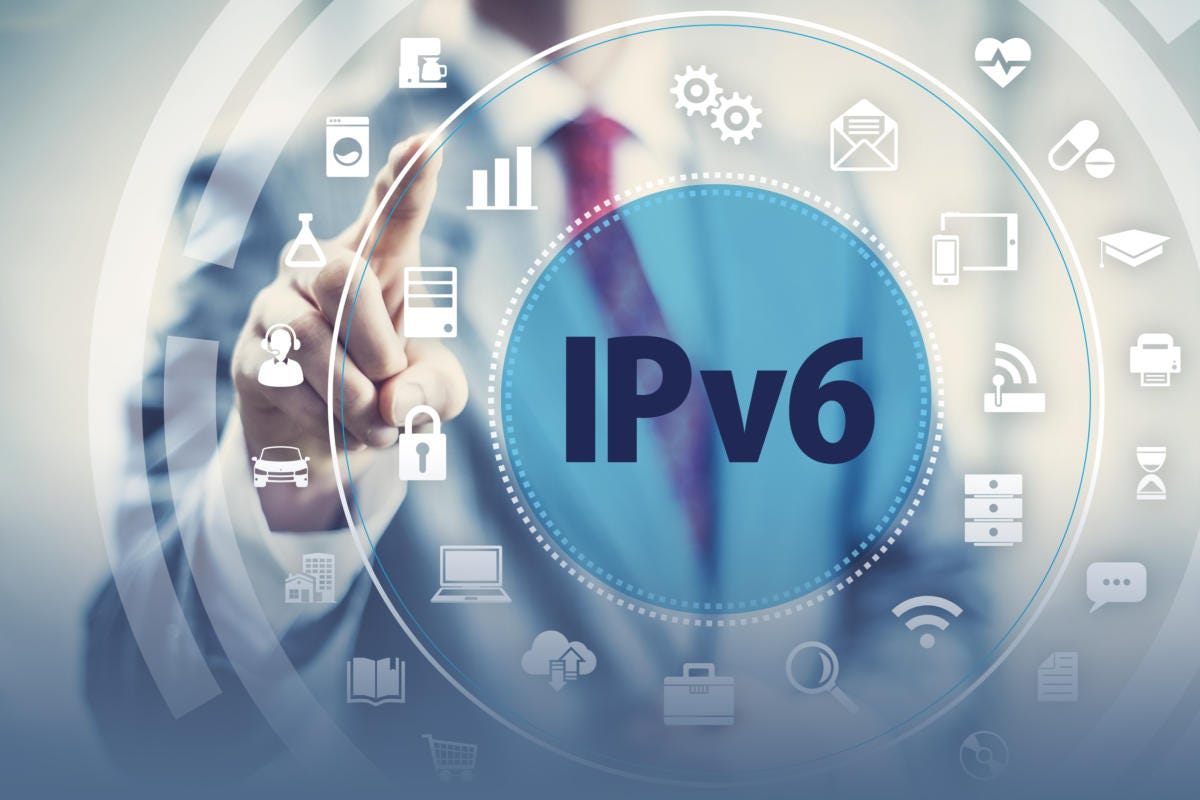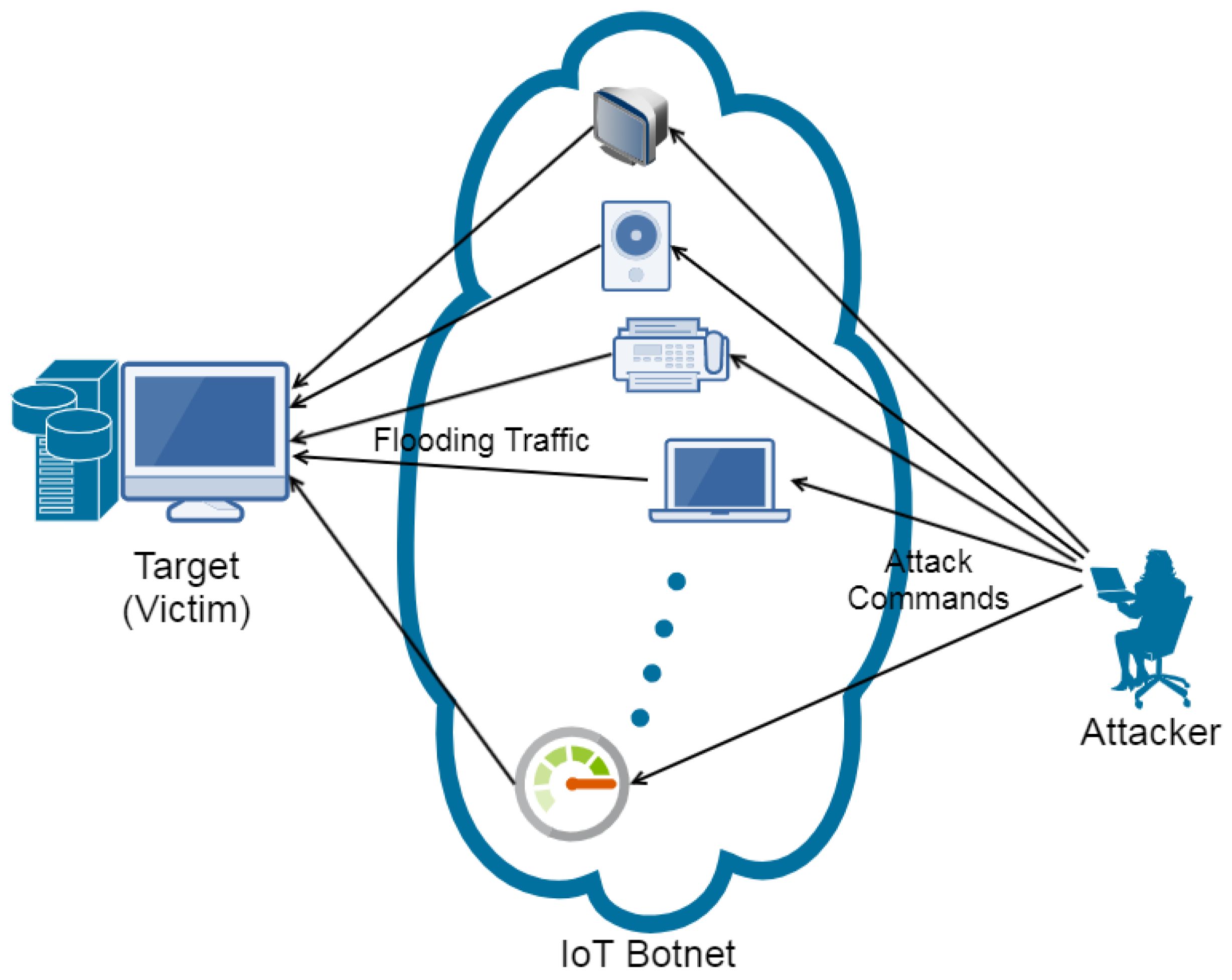Introduction
The Internet of Things (IoT) has revolutionized the way we interact with the world around us. It refers to the network of interconnected devices embedded with sensors, software, and network connectivity, enabling them to collect and exchange data. From smart homes and wearable devices to autonomous vehicles and industrial machinery, the IoT has transformed various industries, offering increased efficiency, convenience, and productivity.
However, amidst the numerous benefits, there is a growing concern about the security of these interconnected devices. The vulnerability of IoT devices poses a significant threat to individuals, organizations, and even the entire infrastructure. It is essential to address these security challenges and prioritize IoT security for the overall well-being of individuals and the smooth functioning of society.
The purpose of this article is to highlight the importance of IoT security and shed light on the risks and threats associated with inadequate security measures. Furthermore, we will explore the data privacy and protection concerns in IoT, discuss the deficiencies in IoT device security, and illustrate the potential consequences of not prioritizing IoT security. Finally, we will provide some best practices that can help ensure robust and reliable IoT security.
What is IoT?
The Internet of Things (IoT) refers to the network of interconnected devices that are embedded with sensors, software, and network connectivity, enabling them to collect and exchange data. These devices can range from everyday objects such as household appliances, wearables, and vehicles to complex industrial machinery and infrastructure.
The concept of IoT revolves around the idea of connectivity and data sharing between devices, allowing them to communicate and interact with each other seamlessly. By harnessing the power of IoT, we can create a smart environment where devices are interconnected and work in harmony to improve efficiency, productivity, and quality of life.
The fundamental principle of IoT is the ability of devices to collect and transmit data. Sensors play a vital role in capturing various types of data, including environmental conditions, user behavior, and device performance. This data is then processed and analyzed, providing valuable insights and enabling informed decision-making.
Through IoT, we can leverage real-time data to automate processes, optimize resource utilization, enhance safety and security, and create personalized experiences. For example, in a smart home, IoT devices can communicate with each other to regulate temperature, control lighting, manage energy consumption, and even monitor security.
The potential applications of IoT extend beyond homes and consumer devices. Industries like healthcare, manufacturing, transportation, and agriculture can benefit tremendously from IoT technologies. For instance, in healthcare, IoT devices can provide remote patient monitoring, real-time data analysis, and improve healthcare delivery. In manufacturing, IoT can enable predictive maintenance, supply chain optimization, and enhanced operational efficiency.
Overall, IoT has the power to revolutionize the way we live, work, and interact with technology. It has the potential to create a more connected and intelligent world, where devices seamlessly integrate into our daily lives, making them more convenient, efficient, and secure.
The Importance of IoT Security
With the increasing integration of IoT devices into our everyday lives, ensuring their security is of paramount importance. IoT security refers to the measures and practices implemented to protect IoT devices, networks, and the data they generate from unauthorized access, breaches, and malicious activities.
One of the primary reasons why IoT security is crucial is the extensive amount of sensitive data that these devices collect and transmit. From personal information, including names, addresses, and financial data, to confidential business data and intellectual property, IoT devices are a treasure trove of valuable information. If left unsecured, this data can be exploited by cybercriminals, leading to identity theft, fraud, and other cyber-attacks.
Moreover, compromised IoT devices can serve as gateways for hackers to infiltrate entire networks. Once a single device is breached, it can provide access to other connected devices and systems, creating a domino effect of security breaches. This can have severe implications for organizations, as a breach in critical infrastructure or industrial machinery can disrupt operations, compromise safety, and incur significant financial losses.
Another crucial aspect of IoT security is privacy. IoT devices have the potential to capture vast amounts of personal data, often without the user’s explicit consent. This raises concerns about data privacy and how this information is collected, stored, and shared. Without proper security measures in place, IoT devices can inadvertently expose individuals’ private information, leading to privacy violations and breaches of trust.
Furthermore, IoT security is essential for ensuring the reliability and integrity of IoT devices and networks. IoT devices are susceptible to various vulnerabilities, including weak passwords, insecure communication protocols, and lack of software updates. These vulnerabilities can be exploited by attackers to manipulate or disrupt the functioning of devices, leading to potential safety hazards or system failures.
Ultimately, the importance of IoT security lies in the protection of individuals’ privacy, the integrity of data, and the overall security and stability of networks and systems. By implementing robust security measures, organizations and individuals can mitigate risks, prevent unauthorized access, and cultivate a safe and trustworthy IoT ecosystem.
Risks and Threats in IoT Security
The rapid proliferation of IoT devices has brought about various risks and threats in terms of security. Understanding and addressing these risks is crucial for ensuring the safety and reliability of IoT systems.
One of the primary risks in IoT security is the lack of standardization and regulation. The IoT ecosystem comprises a wide range of devices from different manufacturers, each with its own set of security protocols and practices. This lack of uniformity makes it challenging to establish consistent security measures across all devices, leaving room for vulnerabilities and inconsistencies.
Another significant threat is the vulnerability of IoT devices themselves. Many IoT devices have limited computing power and memory, making them attractive targets for hackers. Manufacturers may prioritize functionality and cost-effectiveness over implementing robust security measures, leading to easily exploitable vulnerabilities.
IoT devices often rely on wireless connectivity, which introduces additional security risks. Wireless communication can be susceptible to interceptions and attacks, allowing attackers to gain unauthorized access to the data being transmitted. Devices using outdated or weak encryption protocols are particularly vulnerable, making it crucial for manufacturers to prioritize secure communication protocols.
Furthermore, IoT devices often have weak or default passwords, which are easy for attackers to guess or brute-force. This can provide an entry point for malicious actors to gain control over the devices and potentially exploit them or use them as part of a botnet.
Denial of Service (DoS) attacks are another significant threat in IoT security. By overwhelming a device or network with a flood of requests, attackers can render IoT devices or systems inaccessible, leading to service disruption or financial losses.
Finally, a growing concern in IoT security is the emergence of sophisticated attacks targeting the integrity of data. Manipulating or tampering with the data collected by IoT devices can have far-reaching consequences, from undermining trust in the data to causing physical harm or financial losses. Ensuring data integrity is crucial for maintaining the reliability and trustworthiness of IoT systems.
Addressing these risks and threats requires a multi-faceted approach, involving robust security measures at every level of the IoT ecosystem. From secure device design and strong authentication protocols to encryption and monitoring systems, implementing comprehensive security measures is essential to defend against these risks and threats.
Data Privacy and Protection
Data privacy and protection are critical aspects of IoT security, considering the vast amount of personal and sensitive information that IoT devices collect and share. Safeguarding this data is essential to protect individuals’ privacy rights and prevent misuse or unauthorized access.
One of the primary concerns in IoT data privacy is the collection of personal information without explicit user consent. IoT devices often gather data about users’ behaviors, preferences, and even physical movements without their knowledge. This raises questions about individuals’ right to privacy and the need for transparent data collection practices.
To ensure data privacy in IoT, it is essential to implement robust security measures to protect data both in transit and at rest. Strong encryption protocols should be used to secure data transmission between devices and networks, preventing unauthorized access or interception. Additionally, proper access controls and authentication mechanisms should be in place to restrict data access to authorized individuals or devices.
Data anonymization is another important practice in IoT data privacy. By removing personally identifiable information from collected data, individuals’ privacy can be protected while still allowing for meaningful analysis and utilization of the data. Anonymization techniques include aggregating data, removing direct identifiers, and implementing data masking or obfuscation techniques.
Organizations should also adopt privacy-by-design principles when developing and deploying IoT systems. This involves integrating privacy considerations from the outset, designing systems that minimize the collection and retention of personally identifiable data, and incorporating privacy-enhancing technologies into the architecture of IoT devices and networks.
Transparency and clear communication regarding data collection and usage are crucial in IoT. Users need to be informed about the types of data collected, the purpose of collection, and how the data will be used or shared. Providing individuals with control over their data, such as opt-out options or data deletion mechanisms, can empower them to make informed decisions about their privacy.
Compliance with regulatory frameworks and standards is also vital in ensuring data privacy. Organizations should adhere to relevant data protection laws and regulations, such as the EU General Data Protection Regulation (GDPR), and implement practices to safeguard individuals’ rights and protect their personal information.
By prioritizing data privacy and protection in IoT systems, individuals can have greater confidence in sharing their data, and organizations can build trust with their users. Ultimately, respecting data privacy rights is not only a legal and ethical obligation but also a crucial aspect of maintaining the integrity and sustainability of the IoT ecosystem.
Security Deficiencies in IoT Devices
The proliferation of IoT devices has brought about a range of security deficiencies that need to be addressed to ensure the integrity and privacy of IoT systems. These vulnerabilities and weaknesses can make IoT devices attractive targets for hackers and expose users to various risks.
One of the significant security deficiencies in IoT devices is the prevalence of weak or default passwords. Many IoT devices come with factory default or easily guessable passwords, making it easier for attackers to gain unauthorized access. Manufacturers must ensure that devices are shipped with unique, strong passwords that users can easily change during setup.
Lack of timely and regular software updates is another critical security deficiency in IoT devices. Manufacturers often overlook the importance of providing firmware updates to address security vulnerabilities. As a result, many devices remain unpatched and exposed to potential exploits, leaving users at risk. Regular software updates and patches are crucial in addressing newly identified vulnerabilities and improving the overall security posture of IoT devices.
Insecure communication protocols pose a significant security deficiency in IoT devices. Many devices rely on inadequate encryption methods or use outdated protocols that can be easily exploited by attackers. Implementing strong encryption algorithms and secure communication protocols is vital to protect data transmitted between IoT devices and networks.
Furthermore, insufficient authentication mechanisms can lead to security deficiencies in IoT devices. Weak or missing authentication measures can allow unauthorized individuals or devices to gain access to sensitive data or control over the devices. Implementing robust authentication protocols, such as two-factor authentication or biometrics, can significantly enhance the security of IoT devices and prevent unauthorized access.
Inadequate physical security measures for IoT devices can also pose a security deficiency. IoT devices are often deployed in various environments where they may be physically accessible to potential attackers. Failing to implement physical security measures, such as tamper-proof casing or anti-tamper mechanisms, can make it easier for attackers to compromise devices and manipulate their functionalities.
The lack of standardized security frameworks and guidelines is another significant security deficiency in IoT devices. With a wide variety of devices available in the market, each with its own security protocols, it becomes challenging to ensure consistent and reliable security across all devices. The adoption of standardized security frameworks can help establish baseline security requirements and practices for IoT devices.
Addressing these security deficiencies requires a concerted effort from manufacturers, regulatory bodies, and users. Manufacturers must prioritize security during the design and development phase, implement robust security measures, provide regular updates, and improve user awareness. Regulatory bodies can establish guidelines and enforce compliance with security standards. Finally, users must educate themselves about IoT security best practices and take proactive measures to secure their devices.
The Consequences of Inadequate IoT Security
Inadequate security measures in IoT devices can have severe consequences that can impact individuals, organizations, and even society as a whole. The interconnected nature of IoT systems amplifies the potential risks and repercussions of compromised security.
One of the primary consequences of inadequate IoT security is the risk to personal privacy. IoT devices collect a plethora of personal data, including sensitive information about individuals’ habits, behaviors, and preferences. If this data falls into the wrong hands due to inadequate security measures, it can lead to identity theft, financial fraud, or other forms of privacy violation.
Moreover, compromised IoT devices can serve as entry points for cybercriminals to gain unauthorized access to networks and systems. Once an attacker gains control over an IoT device, they can use it as a launching pad to infiltrate other devices and compromise the overall network security. This can have devastating consequences for organizations, leading to data breaches, service disruptions, and significant financial losses.
In industrial settings, inadequate IoT security can have even more severe consequences. Critical infrastructure, such as power plants, transportation systems, and manufacturing facilities, rely heavily on interconnected IoT devices. A security breach in such systems can lead to physical harm, environmental disasters, and even loss of life. The potential impact is not limited to financial losses but extends to public safety and well-being.
Another consequence of inadequate IoT security is the potential for widespread disruption and chaos in society. With the increasing reliance on IoT devices in various aspects of our lives, from healthcare to transportation, a security breach can have a cascading effect, leading to significant disruptions. Imagine the ramifications if autonomous vehicles or smart traffic systems were compromised, causing traffic accidents or gridlock in a city.
Furthermore, inadequate IoT security can erode trust in technology and hinder the widespread adoption of IoT systems. Users may become wary of using IoT devices, especially if there have been high-profile security breaches in the past. This can impede the growth and innovation in the IoT industry and limit the potential benefits that can be derived from these interconnected systems.
Overall, the consequences of inadequate IoT security are far-reaching and can impact individuals, organizations, and society in profound ways. It is crucial to prioritize and invest in robust security measures to protect the privacy, integrity, and safety of IoT systems and the individuals who rely on them.
Best Practices for Ensuring IoT Security
To mitigate the risks and vulnerabilities associated with IoT devices, it is essential to implement best practices that prioritize and ensure robust IoT security. By following these guidelines, individuals and organizations can enhance the security posture of their IoT systems:
1. Strong Authentication: Implement secure authentication mechanisms, such as two-factor authentication or biometrics, to ensure that only authorized individuals or devices can access IoT devices or networks.
2. Regular Software Updates: Stay vigilant about applying firmware updates and patches released by device manufacturers. Regular updates ensure that known vulnerabilities are addressed and closed, minimizing the risk of exploitation.
3. Secure Communication: Use strong encryption methods and secure communication protocols to protect data transmitted between IoT devices and networks. This ensures that the data remains confidential and integrity is maintained.
4. Unique and Strong Passwords: Change default or weak passwords on IoT devices to strong and unique ones. A combination of lowercase and uppercase letters, numbers, and special characters should be used for maximum security.
5. Network Segmentation: Segment IoT devices from the rest of the network to limit potential attack surfaces. This helps contain any security breaches and prevent lateral movement within the network.
6. Physical Security: Protect physical access to IoT devices by ensuring they are located in secure areas. Employ tamper-proof casings, locks, or surveillance to mitigate the risk of physical tampering or unauthorized access.
7. Vendor Due Diligence: Only purchase IoT devices from reputable vendors that prioritize security in their designs and regularly release security patches and updates. Research the vendor’s track record on security practices before making a purchase.
8. Data Minimization: Collect and store only the necessary data from IoT devices. Minimizing data collection reduces the potential impact of a breach and protects individuals’ privacy. Regularly assess the necessity of collected data and delete any unnecessary data.
9. User Education: Educate users about IoT security risks and best practices. Provide guidance on how to create strong passwords, avoid suspicious links or downloads, and recognize phishing attempts. Encourage regular security awareness training for all individuals using IoT devices.
10. Privacy by Design: Integrate privacy considerations into the design and development of IoT devices. Adopt privacy-enhancing technologies from the outset, implement data anonymization techniques, and ensure transparent data collection and usage practices.
By implementing these best practices, individuals and organizations can significantly enhance the security and resilience of their IoT systems. Vigilance, proactive measures, and a comprehensive approach to security are key to mitigating the inherent risks associated with IoT devices.
Conclusion
The Internet of Things (IoT) continues to revolutionize the way we interact with the world, offering increased convenience, efficiency, and productivity. However, the widespread adoption of IoT devices also brings significant security challenges that must be addressed to protect individuals, organizations, and society as a whole.
Throughout this article, we have highlighted the importance of IoT security and the various risks and threats associated with inadequate security measures. The collection and transmission of vast amounts of sensitive data by IoT devices make data privacy and protection a crucial concern. The security deficiencies in IoT devices, such as weak passwords and outdated software, further magnify the risks they pose.
The consequences of inadequate IoT security can be far-reaching, including privacy breaches, compromised networks, physical harm, and disruptions to critical infrastructure. To mitigate these risks, we have presented several best practices and guidelines for ensuring robust IoT security. These practices include strong authentication, regular software updates, secure communication protocols, unique and strong passwords, network segmentation, and user education.
Adopting these best practices, along with other recommended measures like vendor due diligence and privacy-by-design principles, can significantly enhance the security posture of IoT systems. It is imperative for manufacturers, regulatory bodies, users, and all stakeholders to come together and prioritize the implementation of these security measures.
By doing so, we can build a resilient, trustworthy, and secure IoT ecosystem that realizes the potential benefits of IoT while mitigating potential risks. It is crucial to strike a balance between innovation and security to ensure that individuals’ privacy is protected, data integrity is maintained, and the potential threats posed by inadequate IoT security are mitigated.

























